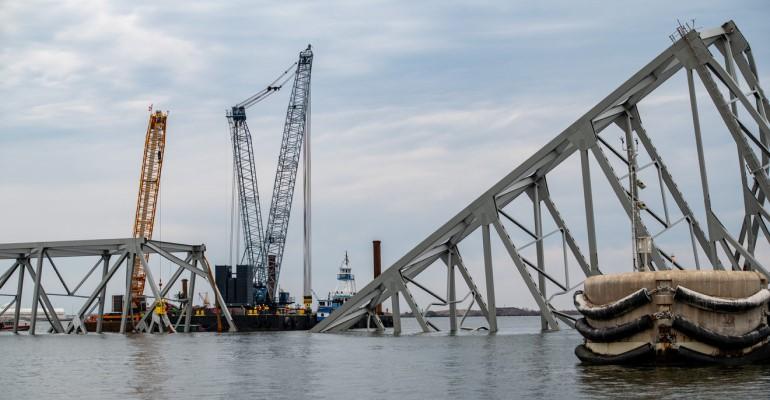The second temporary channel has a depth of 14 feet with 280 feet of horizontal clearance and 124 feet vertical clearance. Transit will only be authorised at the discretion of the captain of the port during daylight hours. The channel adds to an 11-foot depth channel which opened on April 1 on the northeast side of the collapsed bridge .
“The opening of these two alternate channels and transit of critical response resources, as well as the first commercial traffic movements through the area, is a significant milestone in our response efforts,” said US Coast Guard Cmdr. Baxter Smoak, operations section chief of the Key Bridge Response 2024.
The Key Bridge collapsed on 26 March when it was hit by the container ship Dali, chartered by Maersk and owned by Singapore-based Grace Ocean, which is believed to have suffered a power outage around five minutes prior to the accident. Six workers on the bridge died in the collapse.
Work is continuing to remove the wreckage of the collapsed bridge using two crane barges, a 650-ton crane and 350-ton crane.
Authorities said that the 2,000-yard safety zone around the bridge remained in effect and cannot be entered by members of the public unless authorised by the captain of the port.
“Our number one priority remains the opening of the deep draft channel. We are simultaneously focused on opening additional routes of increased capacity as we move forward,” added Smoak.
Copyright © 2024. All rights reserved. Seatrade, a trading name of Informa Markets (UK) Limited.
Add Seatrade Maritime News to your Google News feed.  |

